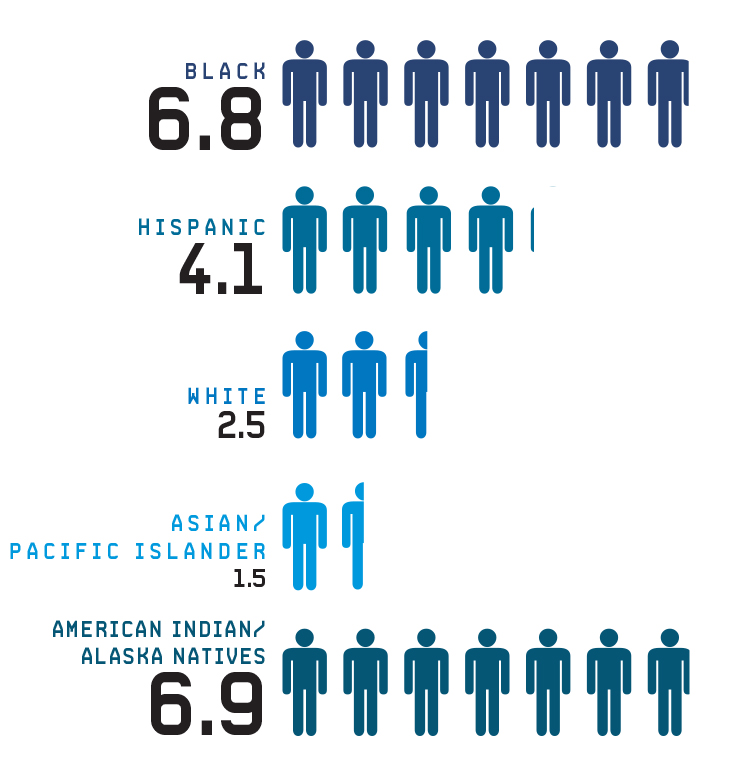
_James Buehler
Buehler is a clinical professor in the Dornsife School of Public Health.
Black males are nearly three times as likely to be killed by police as white males, and Hispanic males are more than one-and-a-half times as likely to fall victim, according to a new Drexel study that looked at population-level data.
Professor James Buehler conducted his study in response to widespread interpretations of a study released in the summer of 2016 by Roland G. Fryer. Many people interpreted Fryer’s study, which looked at situations in which lethal force might be used, as finding that there was no racial difference in “legal intervention deaths” as a result of police encounters. Buehler felt that the study left out an important part of the whole picture.
Buehler’s follow-up study, published in the American Journal of Public Health, used national records from the Centers for Disease Control and Prevention’s Wide-Ranging Online Data for Epidemiology Research database from 2010–14. Of the 2,285 deaths attributed to law enforcement action over that five-year period (1.5 per million in U.S. population per year), 96 percent were males 10 years or older.
According to Buehler’s study, the numbers show that black males are 2.8 times as likely to die by police action as white males, and Hispanic males are 1.7 times as likely. Although American Indians and Alaska natives accounted for just 2 percent of the deaths, their rate was comparable to the rate seen among black males.
The chart at the left shows that the racial disparity among those deaths, though, was striking: The numbers show that black males are 2.8 times as likely to die by police action as white males, and Hispanic males are 1.7 times as likely. Although American Indians and Alaska natives accounted for just 2 percent of the deaths, their rate was comparable to the rate seen among black males.
Buehler’s results differed from Fryer’s because the mortality rates he reported reflected the entire sequence of events leading to a death, whereas Fryer focused only on whether lethal force was used in situations where it might be needed. Buehler says he hopes population-level studies of this sort call attention to the disparities in legal intervention deaths.
“As a public health person, any large disparity in health is a concern to me,” Buehler says. “Awareness of these differences should encourage ongoing attention to find solutions to this problem.”
